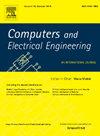Comprehensive review of power quality disturbance detection and classification techniques
IF 4
3区 计算机科学
Q1 COMPUTER SCIENCE, HARDWARE & ARCHITECTURE
引用次数: 0
Abstract
In recent decades, Power Quality Disturbances (PQD) analysis has gained significant attention due to the excessive use of non-linear power electronics. This review paper provides a comprehensive analysis of PQD detection and classification using signal processing methods for feature extraction. Methods such as Artificial Intelligence (AI), Artificial Neural Networks (ANN), Neuro-Fuzzy (NF), Genetic Algorithm (GA), and Deep Learning methods (DL), among others. Additionally, Discrete Wavelet Transform (DWT), S-Transform (ST), Multi-Resolution Analysis (MRA), and Wavelet Transform (WT) techniques are discussed. Herein, various feature extraction techniques and their combinations with intelligent methods were also evaluated for classifying PQDs. While various AI and feature extraction techniques have been examined for PQD classification, they often suffer from limitations such as high computational complexity and constraints in real-time conditions. However, experiments on datasets demonstrate an improvement in detection accuracy compared to state-of-the-art methods. A novel hybrid framework combining DL and GA methods, such as CNN with optimized DWT and MRA, aims to improve classification accuracy while maintaining computational efficiency. This framework demonstrates the potential of traditional techniques as reliable and effective classifiers compared to other algorithms.

电能质量干扰检测与分类技术综述
近几十年来,由于非线性电力电子的过度使用,电能质量干扰(PQD)分析受到了极大的关注。本文对利用信号处理方法进行特征提取的PQD检测和分类进行了全面分析。人工智能(AI)、人工神经网络(ANN)、神经模糊(NF)、遗传算法(GA)和深度学习方法(DL)等方法。此外,还讨论了离散小波变换(DWT)、s变换(ST)、多分辨率分析(MRA)和小波变换(WT)技术。本文还对各种特征提取技术及其与智能方法的结合进行了评价。虽然各种人工智能和特征提取技术已经被用于PQD分类,但它们经常受到诸如高计算复杂性和实时条件约束等限制。然而,在数据集上的实验表明,与最先进的方法相比,检测精度有所提高。一种结合深度学习和遗传算法的新型混合框架,如CNN与优化的DWT和MRA,旨在提高分类精度的同时保持计算效率。与其他算法相比,该框架展示了传统技术作为可靠和有效分类器的潜力。
本文章由计算机程序翻译,如有差异,请以英文原文为准。
求助全文
约1分钟内获得全文
求助全文
来源期刊

Computers & Electrical Engineering
工程技术-工程:电子与电气
CiteScore
9.20
自引率
7.00%
发文量
661
审稿时长
47 days
期刊介绍:
The impact of computers has nowhere been more revolutionary than in electrical engineering. The design, analysis, and operation of electrical and electronic systems are now dominated by computers, a transformation that has been motivated by the natural ease of interface between computers and electrical systems, and the promise of spectacular improvements in speed and efficiency.
Published since 1973, Computers & Electrical Engineering provides rapid publication of topical research into the integration of computer technology and computational techniques with electrical and electronic systems. The journal publishes papers featuring novel implementations of computers and computational techniques in areas like signal and image processing, high-performance computing, parallel processing, and communications. Special attention will be paid to papers describing innovative architectures, algorithms, and software tools.
 求助内容:
求助内容: 应助结果提醒方式:
应助结果提醒方式:


